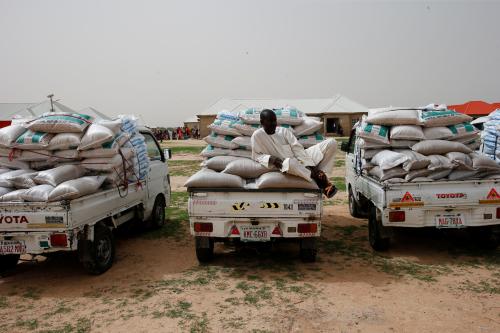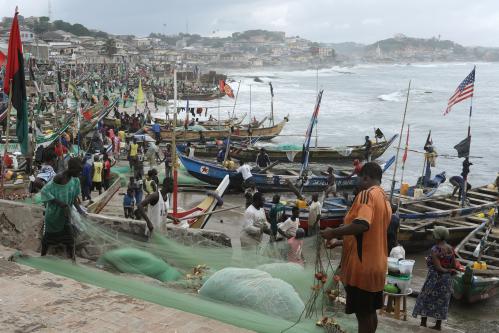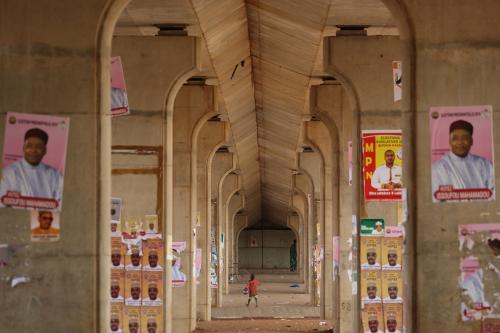Each week, the Brookings Africa Growth Initiative highlights a “figure of the week,” in which we share a significant or interesting figure explaining recent developments on the continent. The post highlights an interesting chart, table, or graph from recently published reports that explore important statistics or policy developments. In our final “figure of the week” for 2019, we revisit the most-read posts of the year.
1. Foreign direct investment in Africa
In 2018, foreign direct investment (FDI) in Africa remained steady from previous years, according to EY’s Africa Attractiveness Report. Notably, between 2014-18, China was the largest investor in Africa with more than twice the amount of capital invested compared to the United States and France (Figure 1). Emerging partners such as China, India, and the United Arab Emirates accounted for 50 percent of jobs created through FDI during this period. South Africa remains the largest source of intra-African FDI, which continued to grow in 2018.
Figure 1: FDI 2014-2018 by source
Source: EY. 2019. Africa Attractiveness Report.
2. With AfCFTA officially in force, Africa is now the largest free trade area
In 2019, African countries ratified the African Continental Free Trade Agreement (AfCFTA), creating the largest free trade area since the establishment of the World Trade Organization. The free trade area is expected to help boost intra-African trade, which remains far lower than in other regions (Figure 2). The AfCFTA shows promise: According to estimates by UNECA, intra-African trade could be 15 to 25 percent higher by 2040. Additionally, according to a Brookings policy brief, “Keys to success for the AfCFTA negotiations,” Africa is expected to have combined business and consumer spending of $6.7 trillion by 2030.
Figure 2: Africa’s intra-regional merchandise trade compared to other regional blocs
Source: Landry Signé and Colette van der Ven, Brookings Institution, “Keys to success for the AfCFTA negotiations,” 2019.
3. Africa’s infrastructure needs are an investment opportunity
Earlier this year, the World Bank published the report, “Lifelines: The Resilient Infrastructure Opportunity,” on the challenges fragile countries and communities face from infrastructure disruptions. The report finds that African countries comprise at least half of the top 15 most-affected countries in electricity, water, and transport infrastructure disruption (Figure 3). Estimates from the African Development Bank show that Africa’s infrastructure needs are between $130 and $170 billion per year.
Figure 3: Top 15 countries with greatest utilization rate losses, by type of infrastructure disruption
4. Unique challenges facing African urbanization
Earlier this year, the World Bank published a report on urbanization in sub-Saharan Africa that found that urbanization is not generating the same economic growth as that experienced by other regions. The report, “Which Way to Livable and Productive Cities? A Road Map for Sub-Saharan Africa,” highlights that, between 1990 and 2016, there was no clear pattern of economic growth in sub-Saharan African countries as the share of its urban population increased (Figure 4). On the other hand, GDP per capita growth was closely correlated with a rising share of urban population for East Asian countries over the same period.
Figure 4: East Asia vs. sub-Saharan Africa, urbanization and GDP per capita between 1990 and 2016
Source: Hommann, K. and Lall, S.V., 2019. Which Way to Livable and Productive Cities? A Road Map for Sub-Saharan Africa. World Bank.
5. Governance and economic growth in Africa
In May, PricewaterhouseCoopers (PwC) released its Global Economy Watch report, which analyzes the relationship between economic growth and governance in Africa. Notably, the report finds a positive relationship between governance improvement and change in per capita GDP during the 2013-2017 period (Figure 5). Some of the region’s fastest-growing economies, such as Côte d’Ivoire, Rwanda, and Guinea, saw large improvements in governance while some of those growing more slowly saw declines.
Figure 5: Annual change in real GDP per capita (2013-17) and change in Composite Governance Indicator percentile rank growth (2013-17)
Source: PricewaterhouseCoopers. 2019. Global Economy Watch.












Commentary
The Africa Growth Initiative’s top 5 figures of 2019
December 18, 2019